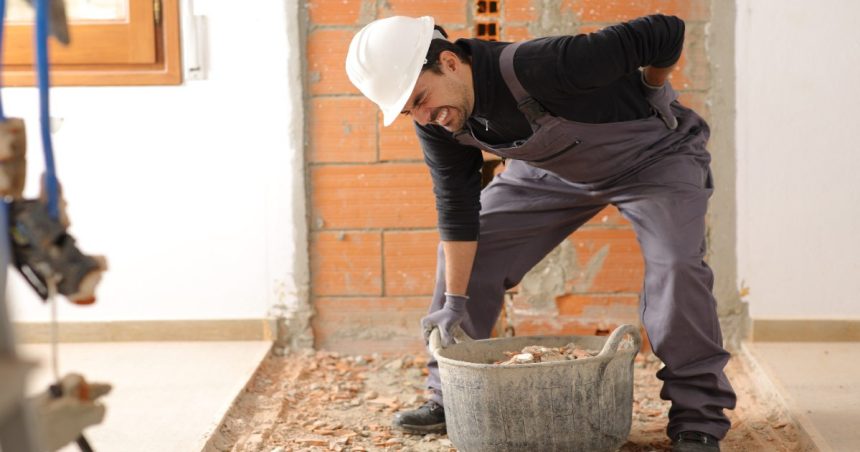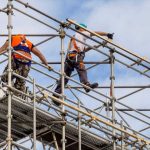They don’t call being a tradie “hard graft” for no reason.
A new study released earlier this month has shown a third of tradies are powering through work-related aches and pains rather than taking time off to recuperate.
The data, provided by Australian tradie marketplace hipages, shows that 28 per cent of Aussie tradies have had to power through a workplace-related injury in the last year as they couldn’t afford to take time off.
It’s no secret that being on the tools is hard yakka at the best of times – from the tiresome hours to back-breaking tasks, picking up a work-related injury has long been considered part and parcel of being a tradesperson.
But according to the research, a growing number of tradies are opting to push through the pain just to stay on the job in what is a concerning trend for workplace health and safety.
In fact, 71 per cent of tradespeople say their job has caused them an injury in the last 12 months, with nearly half taking time off to recuperate.
With the average time off work due to injury clocking up over 11 days a year, that means sole traders – who don’t get sick leave – are losing $4,144 annually as a result of getting banged up while on the job.
Nonchalant millennials seem to be triggering the trend, with the Australian Physiotherapy Association (APA) recently revealing 39 per cent of all tradies born between 1981 and 1996 choose to work through aches and pains, putting their long-term health in serious jeopardy.

The concerning figures have reignited calls for construction workers to take more care of their bodies or risk losing their income long term if an incapacitating injury develops.
In response to the new study, hipages Chief Revenue Officer, Robert Tolliday, warned Build-it readers not to “tough it out”.
“We know that tradies have some of the busiest and most physically demanding jobs in Australia, so it’s important that they have an understanding of how to properly warm up, strengthen, and stretch their bodies,” he told Build-it.
“This research allowed us to understand the scale of the issue… an injury means time off the tools, and hipages knows the devastating impact that can have for all tradies, especially business owners.”

Ten minute routine keeps tradies on the job
Construction leaders and health experts say workers can avoid months of pain and rehab by taking preventative measures to avoid injuries occurring in the first place.
To help avoid common injuries and keep small business tradies on the tools, hipages has launched a custom tradie physio routine with the help of expert physio and former chair of the Australian Physiotherapy Association, Dave Hall, encouraging tradies to work “smarter – not harder”.
“Bigger construction companies will often invest in stretch and physio programs for their staff, but we know that small businesses and sole traders often don’t have this luxury due to being time-poor or not having the resources to cover the cost,” Mr Tolliday said.
“This specifically engineered routine has been designed for all tradies across the industry, with consideration of their job environments and workplace practices. Using minimal space and equipment, the exercises are suitable to do at home and onsite. If tradies take just 10 minutes a day to complete this, it will make a huge difference to their physical health.”
Mr Tolliday told Build-it that by taking just 10 minutes to pre-hab before work, tradies could dodge the odds of attracting further niggles and possibly help treat existing aches and pains in the process.
“This routine is designed specifically for tradies to target the areas they tend to injure the most – like the back, shoulders, and knees,” he explained.
“It’s just 10 minutes a day, but it can really make a difference in preventing those common aches and pains. By sticking with it, tradies can avoid injuries, stay on the tools longer, and keep earning without needing to take time off.”
Melbourne-based tradie Martin Nguyen runs his own construction company, Kubra Building Services, and told Build–it the heavy lifting involved with his job means work-related injuries are never too far away.
“Lower back and shoulder pain are definitely the worst for me. Carrying heavy gear and working in awkward positions takes a toll after a while,” he told Build-it.
“The little aches build up, and if you don’t deal with them, they can turn into bigger problems pretty quickly.”
However, since starting the hipages pre-work routine, he has seen a significant change in how he’s feeling whilst on the tools.
“I’ve actually been doing this routine for a while now, and it’s made a real difference. It’s quick and easy, but it really helps with those nagging pains.”
“It’s also inspired me to start doing weekly stretch sessions with my team. I reckon most tradies would get on board once they see how much it helps.”
“The biggest benefit is how it helps prevent injuries that could cut your career short. Doing something as simple as a daily routine can actually help keep you working longer and avoid early retirement from the physical toll.”
“Plus, staying pain-free means you’re not losing time off the job or missing out on work.”







